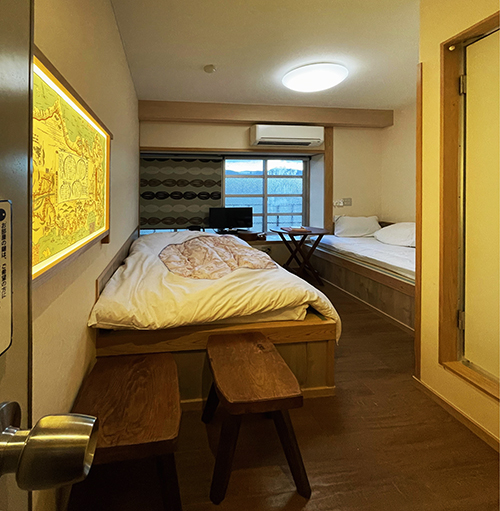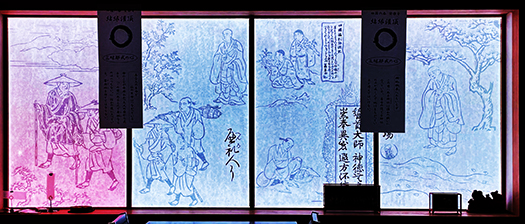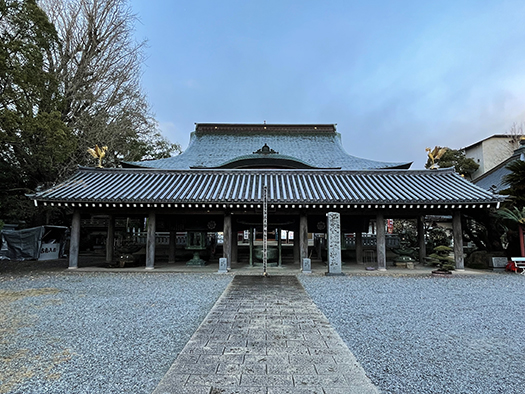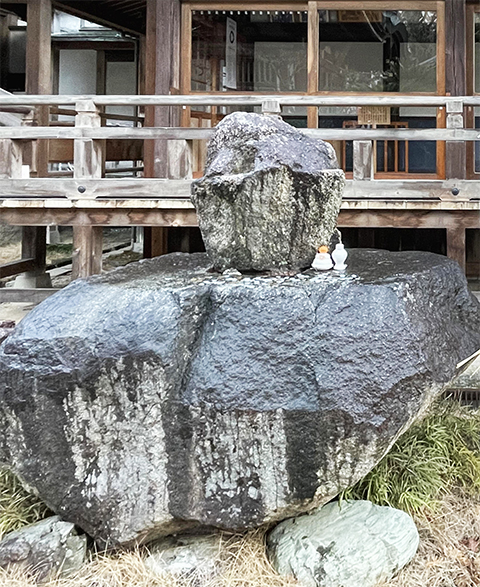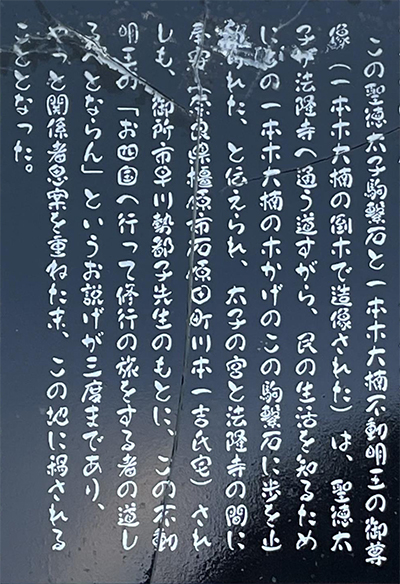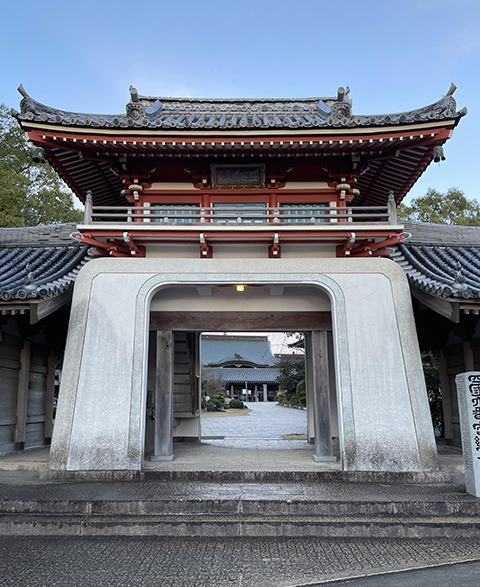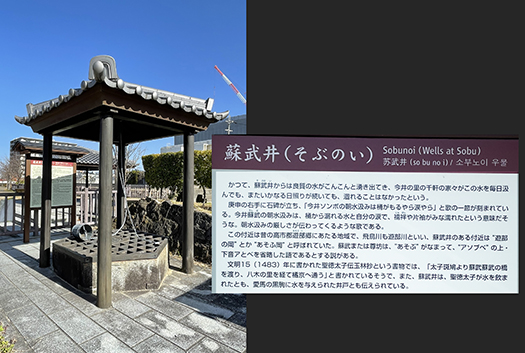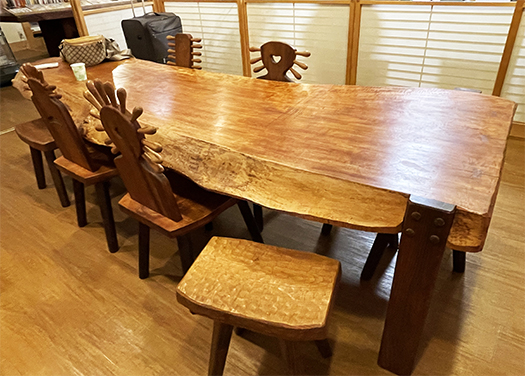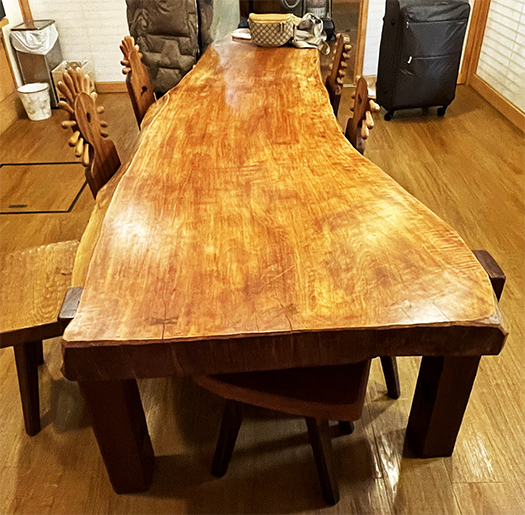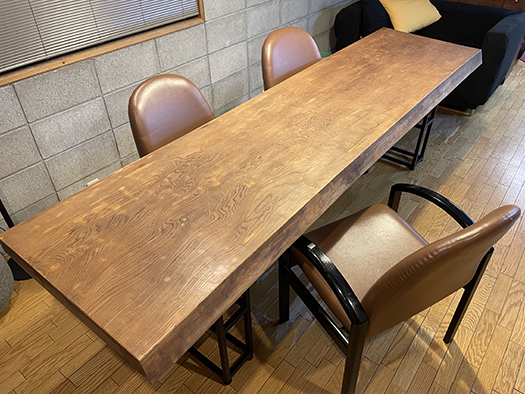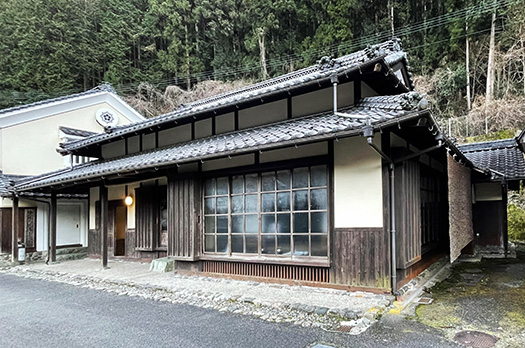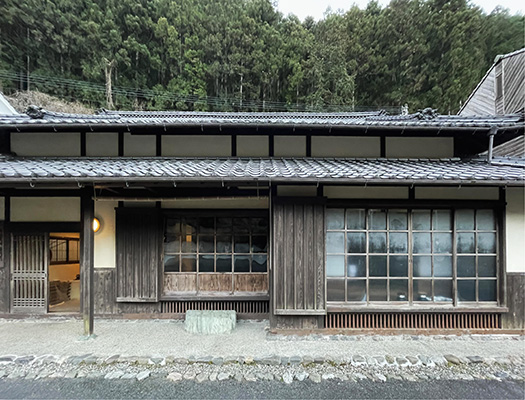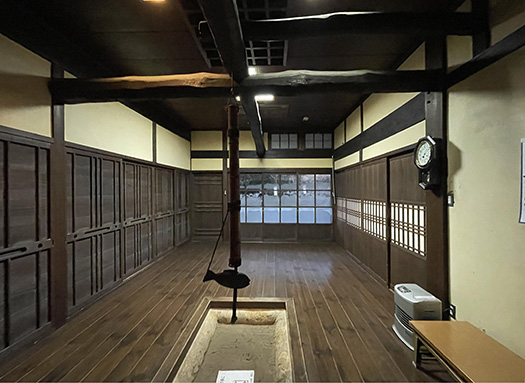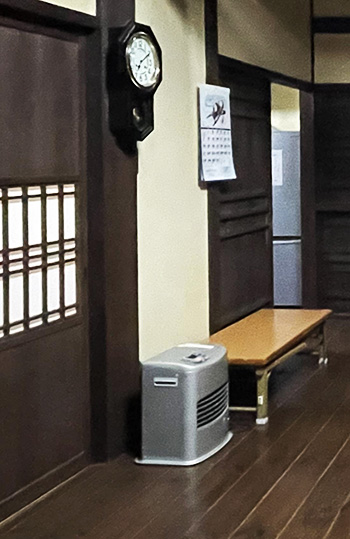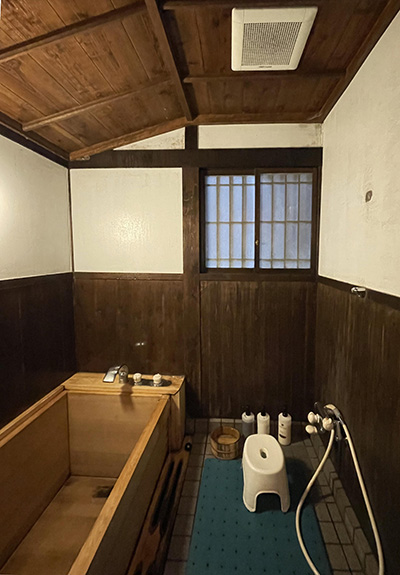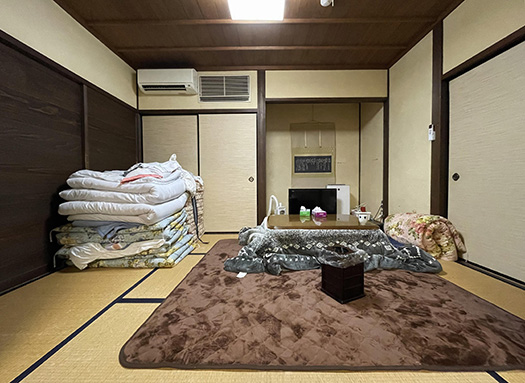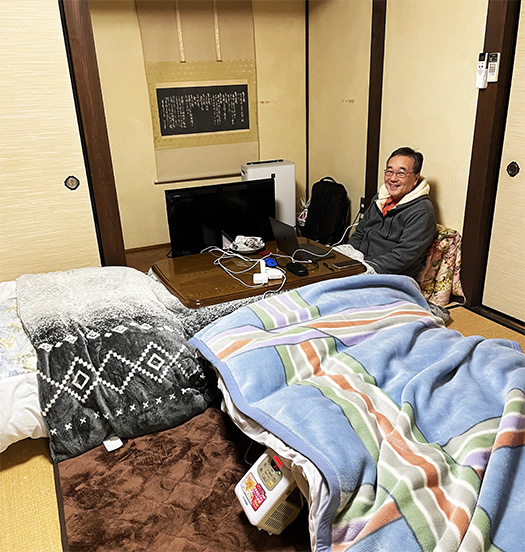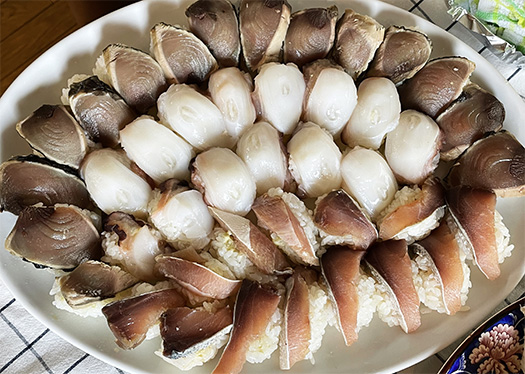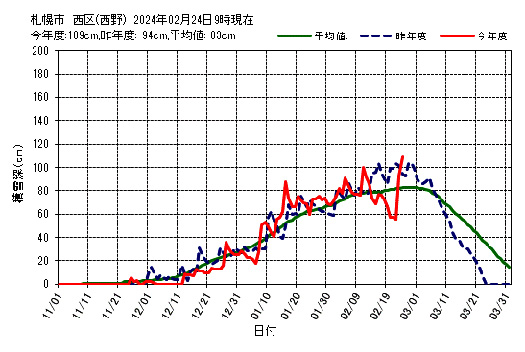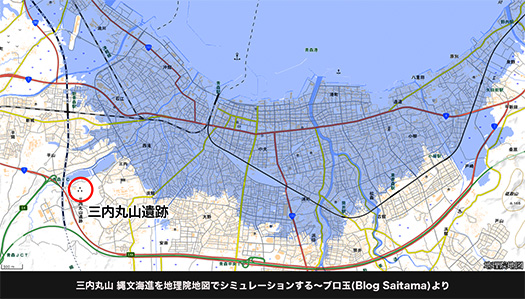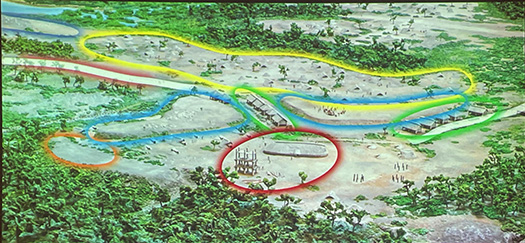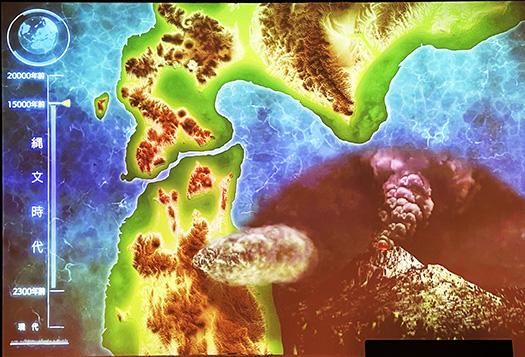
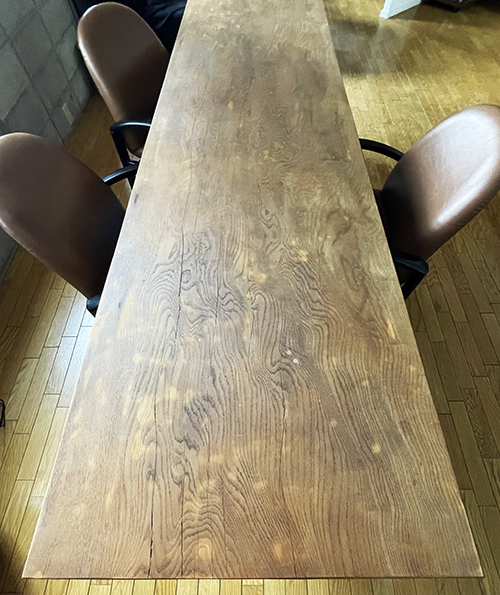
先日、温泉山安楽寺の宿泊体験、それもエントランス空間に置かれていた「無垢材テーブル」のことを書いたのですが、読者の住宅研究者の方からコメントが寄せられていました。
いわく、この無垢材テーブルという生活的な「好み文化」はいったいどういった出自なんでしょうね?という疑問の発出。その方自身もご自宅では無垢材テーブルを愛用されているのだそうで、一方、日本の家の歴史の中で「家族団欒」の場というのに大型テーブルが使われるようになったのは、歴浅ではある、という指摘。
日本家庭史でみれば、家族銘々に食器が配膳される「銘々膳」〜ひとりひとりに出す食膳。家族の者が日常用いる、それぞれに決まっている膳〜こそが伝統的であり、それがやがて茶の間という畳敷きの部屋に食事時だけ出現させる「ちゃぶ台」文化に移行していった。その後、戦後社会になって「寝食分離」で食堂が台所と一体化する文化が出現することで、定置的な「食卓テーブル」文化になって、現代的家族団欒の場が成立した。
銘々膳の時代には無用な「会話」は厳禁とされる家族文化が支配的で、いかにも家父長制的な「家庭教育・しつけ」が一般的生活文化だった。それに対して戦後的価値感では「家族の会話」というものがむしろ支配的なものになって、テレビという「文化共有」とがセット化していった。
・・・という流れの中で、欧米社会にもそういう志向性を見いだせない「無垢材テーブル」というものが静かに日本社会で強い浸透を見せているのではないか、というご意見。ついでに言えば、テレビ視聴という家族間での文化情報共有という「習慣」もいま劇的に廃れつつある。アマプラを「みんなで見る」という習慣はたぶんなく、個人視聴という方が多数派だと思う。テレビの文化垂れ流しでの「とらえ方強制」のような側面に拒絶反応が強い。動画チャンネルが取って代わりつつある。わが家の設計時のいちばんの「不似合い」は専用的リビング。たぶんその情報共有強制としてのテレビへの施主の忌避感を見過ごしていた(笑)。
おっと、横道過多(笑)。で、そのような現代人の生活と食事習慣の場面に、欧米的な「デザイン家具」への強い志向性はあまり感じられない。たしかに北欧家具というようなテイスト趣味は存在するけれど、ある特定のデザインへの帰依という心理は現代人には希薄。というより画一性への拒絶反応なのだろうか。
わたしの場合には、新築したときにちゃぶ台に似た円形の食卓テーブルを台所に近接して造作した。材はそこそこの厚み、たしか7cmくらいの集成材テーブル。その後、職住一体と家族専有の家の用途変遷と平行して気分の変化があって、北海道芦別から切り出されたナラの原木を入手させていただき「家の空気のなかで寝かせる」数年間を経て、無垢材テーブルとしてわが家の現場で造作してもらった。
原木として「暴れ」がキツくて、いまでも大きな反りが見られ、その部分だけ不整形に薄くなっている。まぁ主人自体の性格にも問題があるので(笑)、やむなしと受け入れているけれど不快感はまったくない。むしろそういう欠点のある材であることに一期一会的な「愛着」も抱いている。一病息災みたいな。
こういった家具、無垢材テーブルへの嗜好って、はたしてどういう文化性なのか?
問われて以来、悶々と過ごしているけれど、どうにも解のトバ口も見いだせていない。どなたか、ヒントを開示していただければ幸いです。
English version⬇
[Where did the “preference culture” of “solid wood tables” come from?
Is it a strong aversion to the culture of “sharing” to the place of family relations, such as television or some kind of design? Gradually, a strong affinity for the grain of the wood of a lifetime. …
The other day, I wrote about the “solid wood table” that was placed in the entrance space of Onsan Anraku-ji, a lodging experience, and received a comment from a reader who is a housing researcher.
The reader, a housing researcher, commented, “What is the origin of this “culture of preference” for solid wood tables in daily life? The question was raised. The researcher himself is a fan of solid wood tables in his own home, and pointed out that in the history of the Japanese home, large tables have been used for “family reunions” for a long time.
In the history of the Japanese home, the “meizzen,” or a meal served to each member of the family, is a set of dishes used by each member of the family in their daily lives. This was the traditional way of serving food to each family member, and it eventually gave way to the “chabudai” culture of serving meals only in a tatami room called chanoma (tea room). Later, in the postwar society, the dining room was integrated with the kitchen in a “separate dining and sleeping” culture, and a fixed “dining table” culture was established as a modern place for family reunion.
In the era of the “individual meal” system, the family culture was dominated by a strict prohibition of useless “conversation,” and a patriarchal “family education and discipline” was the prevailing lifestyle culture. In contrast, in the postwar era, “family conversation” became the dominant value and was combined with the “shared culture” of television.
In this context, the “solid wood table,” for which no such orientation can be found even in Western society, is quietly making strong inroads in Japanese society, according to your opinion. In addition, the “custom” of sharing cultural information among family members by watching TV is also dramatically dying out. The custom of “watching Amapura together” is probably gone, and I think the majority of people watch TV individually. There is a strong rejection of the “forced viewing” aspect of TV’s cultural drip-feed. Video channels are replacing it. The most “unsuitable” place when our house was designed was the exclusive living room. Perhaps I overlooked the client’s aversion to the TV as a compulsion to share information (laugh).
Oops, sideways excess (laugh). In such a scene of modern people’s life and eating habits, I don’t feel a strong orientation toward Western-style “design furniture. It is true that there is a taste for Scandinavian furniture, but the modern person does not have a psychological attachment to a particular design. Or perhaps it is a rejection of uniformity.
In my case, when I built a new house, I built a round dining table, similar to a tea table, in close proximity to the kitchen. The wood was of a reasonable thickness, about 7 cm, and the table was made of laminated wood. Later, as the use of the house changed and the family members began to use it more and more, I was allowed to obtain a log of oak cut from Ashibetsu, Hokkaido, and after several years of “letting it sleep in the air”, I had it made into a solid wood table at the site of our house.
The wood was so “rough” as a log that even now there is a big warp, and that part of the wood is irregularly shaped and thin. Well, my husband has his own character problem (laugh), so he accepts it as unavoidable, but I don’t feel any discomfort at all. In fact, I have a once-in-a-lifetime attachment to this flawed material. It’s like a cure for all illnesses.
What kind of culture is this preference for furniture and solid wood tables?
I have been agonizing over this question ever since I was asked, but I have not found a solution. I would appreciate it if someone could give me some hints.
Posted on 3月 4th, 2024 by 三木 奎吾
Filed under: 日本社会・文化研究 | No Comments »


